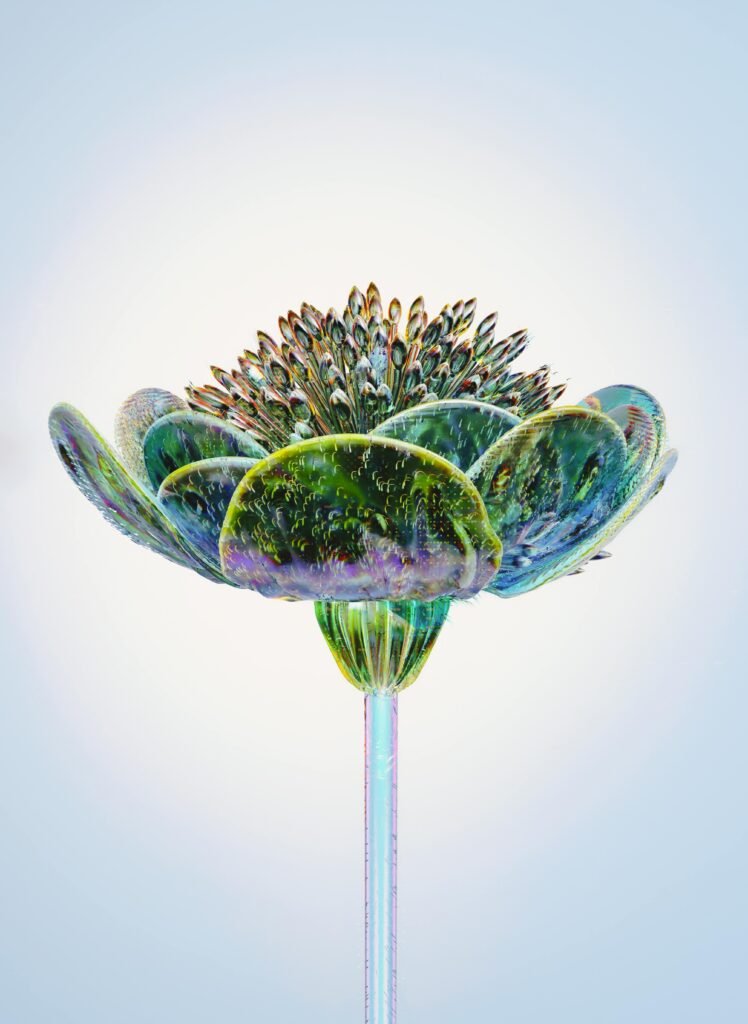Looking to lead a more efficient lifestyle? Look no further! In this article, you will discover 10 power management tips that will not only help you reduce your energy consumption but also save money on your bills. From simple habits to smart technology, these tips are designed to make your life easier while also being friendly to the environment. So, get ready to take control of your power usage and enjoy the benefits of a more sustainable and cost-effective way of living.
Turn off unused electronics
Unplug chargers when not in use
One simple way to reduce energy consumption is to unplug chargers when they are not in use. Even when your phone or device is fully charged, a charger that is left plugged into the wall still consumes energy. By getting into the habit of unplugging chargers once your devices are fully charged, you can save energy and lower your electricity bill.
Switch off lights when leaving a room
It’s a common habit to leave lights on in rooms that you are not currently using. However, this can lead to unnecessary energy consumption. Make it a point to switch off the lights whenever you leave a room. If you often forget, consider installing motion sensor lights that automatically turn off when no movement is detected.
Power down computers and monitors
Computers and monitors can consume a significant amount of energy, especially if they are left on when not in use. Get into the habit of powering down your computer and turning off your monitor when you are done using them. This simple act can help conserve energy and extend the lifespan of your devices.
Turn off appliances when not in use
Appliances such as televisions, DVD players, and gaming consoles continue to draw power even when they are in standby mode. To save energy, make sure to turn them off completely when you are not using them. This can easily be done by using a power strip with an on/off switch, which allows you to cut off power to multiple devices at once.
Utilize power strips with on/off switches
Power strips with on/off switches are a convenient tool for managing the power consumption of multiple devices. By plugging your electronic devices into a power strip with an on/off switch, you can easily turn them all off with a single switch when they are not in use. This helps prevent energy wastage and makes it convenient to turn off multiple devices at once.
Optimize energy-efficient lighting
Replace incandescent bulbs with LEDs
One of the most effective ways to optimize your lighting for energy efficiency is to replace incandescent bulbs with LED bulbs. LED bulbs are much more energy-efficient and can last significantly longer than traditional incandescent bulbs. While LED bulbs may have a slightly higher upfront cost, the long-term savings in electricity bills and fewer bulb replacements make them a cost-effective choice.
Install motion sensor lights
Installing motion sensor lights in your home or office can greatly reduce energy waste. Instead of relying on manual switches to turn lights on and off, motion sensors detect movement and automatically activate the lights when someone enters a room. This ensures that lights are only used when they are needed, saving electricity and reducing your carbon footprint.
Utilize natural daylight
Taking advantage of natural daylight is an effective way to reduce energy consumption for lighting. Open curtains and blinds during the day to allow natural sunlight to illuminate your space. This not only reduces the need for artificial lighting but also provides a more pleasant and natural lighting environment.
Use task lighting instead of overhead lighting
Instead of relying solely on overhead lighting, consider using task lighting for specific activities. Task lighting, such as desk lamps or reading lights, focuses light directly where it is needed, providing ample illumination while using less energy compared to overhead lighting. This targeted approach to lighting can help you reduce your overall energy consumption.
Upgrade to energy-efficient fixtures
In addition to using energy-efficient bulbs, consider upgrading to energy-efficient fixtures. Energy-efficient fixtures are designed to maximize the light output while minimizing energy usage. Look for fixtures with ENERGY STAR ratings, as they meet strict energy efficiency guidelines set by the U.S. Environmental Protection Agency (EPA) and Department of Energy (DOE).

This image is property of images.pexels.com.
Manage heating and cooling systems
Set thermostat to an energy-saving temperature
One of the easiest ways to manage your heating and cooling systems is to set your thermostat to an energy-saving temperature. During the winter months, set your thermostat to a lower temperature when you are away or sleeping, and raise it only when you need the heat. Similarly, during the summer months, set your thermostat to a higher temperature when you are not at home and lower it only when you need to cool down.
Use programmable thermostats
To automate your energy-saving efforts, consider installing programmable thermostats. Programmable thermostats allow you to schedule temperature adjustments based on your daily routine. This means you can have your heating or cooling turn on or off at specific times, ensuring that energy is not wasted when you don’t need it. With programmable thermostats, you can maintain a comfortable indoor climate while optimizing energy usage.
Ensure proper insulation in the home
Proper insulation is key to efficiently managing your heating and cooling systems. Insulation helps to keep the warm air inside during the winter and the cool air inside during the summer. Insulate your windows, doors, and walls to minimize temperature exchange with the external environment. By doing so, you can reduce the workload on your heating and cooling systems, resulting in energy savings.
Seal air leaks around windows and doors
Air leaks around windows and doors can lead to significant energy loss. Seal any gaps or cracks around windows and doors to prevent air infiltration and heat loss. Weatherstripping and caulking are effective methods to seal these air leaks and improve energy efficiency. By reducing drafts and minimizing the need for heating or cooling, you can lower your energy consumption and save money.
Clean or replace air filters regularly
Proper maintenance of your heating and cooling systems is important for energy efficiency. Regularly clean or replace air filters to ensure optimal airflow and prevent dust and debris from obstructing the system. Clogged or dirty filters can restrict airflow, making your HVAC system work harder and consume more energy. By keeping the filters clean, you can improve the system’s efficiency and reduce energy waste.
Reduce vampire power consumption
Unplug electronics when not in use
Many electronic devices continue to consume energy even when they are not actively being used. This is known as vampire power or standby power. To reduce vampire power consumption, unplug electronic devices when they are not in use. This includes unplugging phone chargers, unplugging power adapters, and turning off audio/video equipment completely. By doing so, you can minimize unnecessary energy usage and save on your electricity bill.
Use smart power strips
Smart power strips are a convenient solution for managing vampire power consumption. These power strips have built-in technology that automatically cuts off power to devices when they are not in use. Smart power strips often have one or more designated outlets that remain active, allowing you to keep essential devices plugged in while shutting down peripheral devices. Using smart power strips can help prevent standby power and reduce wasted energy.
Enable power-saving modes on devices
Most electronic devices come with power-saving modes or sleep modes that help conserve energy. Enable these modes on your devices so that they automatically reduce power consumption when they are not actively being used. For example, enable sleep or hibernation mode on your computer to conserve energy during periods of inactivity. Taking advantage of power-saving modes can help you save energy without sacrificing convenience.
Avoid leaving devices on standby mode
Leaving devices in standby mode, which is a low-power mode, still consumes energy. Instead of putting devices on standby, make it a habit to power them off completely when they are not in use. This applies to devices such as televisions, gaming consoles, and audio/video equipment. By turning off these devices completely, you can eliminate standby power consumption and reduce your energy usage.
Invest in energy-efficient appliances
When purchasing new appliances, choose energy-efficient models. Look for appliances with ENERGY STAR labels, as they meet strict energy efficiency standards set by the EPA and DOE. Energy-efficient appliances are designed to consume less energy while still providing the same level of performance. By investing in energy-efficient appliances, you can reduce your energy consumption and lower your carbon footprint.

This image is property of images.pexels.com.
Optimize computer and device power settings
Adjust power settings to low power mode
To optimize the energy consumption of your computer and other devices, adjust the power settings to low power mode. Low power mode reduces energy usage by lowering the performance levels of the device, such as reducing the brightness of the screen or limiting the processor speed. These adjustments help conserve energy without significantly impacting the device’s functionality.
Turn off screen savers
Contrary to popular belief, screen savers do not save energy. In fact, they can actually consume more energy than simply turning off the screen. To conserve energy, disable screen savers on your computer and other devices. Instead, set your device to automatically enter sleep or hibernation mode after a period of inactivity.
Enable sleep/hibernation mode when inactive
When you are not actively using your computer or device, enable sleep or hibernation mode. Sleep mode puts the device into a low-power state, allowing it to resume quickly when you need it. Hibernation mode, on the other hand, saves the current state of your device to the hard drive and then shuts down completely. Enabling sleep or hibernation mode during periods of inactivity helps conserve energy and extends battery life.
Reduce screen brightness
Reducing the screen brightness on your devices can significantly impact energy consumption. Lowering the brightness of your computer, smartphone, tablet, or other devices can help conserve battery life and reduce the amount of power needed to operate the screen. Adjust the brightness settings to a level that is comfortable for you while still being energy-efficient.
Disable unnecessary startup programs
Many computer programs and applications automatically start when you turn on your device. These startup programs consume energy and can slow down the boot time of your computer. Take the time to disable unnecessary startup programs to optimize energy usage and improve the overall performance of your device. By doing so, you can reduce both energy consumption and the time it takes for your device to start up.
Practice energy-efficient cooking
Match pot size to burner size
When cooking on a stovetop, it is important to match the size of the pot or pan to the size of the burner. Using a small pot on a large burner or a large pot on a small burner can result in unnecessary energy waste. By using the appropriately sized cookware, you can maximize heat transfer and ensure that the energy is efficiently utilized.
Cover pots and pans while cooking
Covering pots and pans while cooking can help prevent heat loss and reduce energy consumption. When you cook without a lid, heat escapes from the pot or pan, requiring more energy to maintain the desired cooking temperature. By covering your cookware, you can trap the heat and cook your food more efficiently, saving both time and energy.
Use pressure cookers or slow cookers
Pressure cookers and slow cookers are energy-efficient appliances that can help you save both time and money. Pressure cookers use high pressure and steam to cook food quickly, reducing the time required and the energy consumed. Slow cookers, on the other hand, use a low and steady heat over an extended period, making them energy-efficient for long cooking times. By utilizing these appliances, you can enjoy delicious meals while conserving energy.
Utilize residual heat for cooking
Many cooking appliances retain heat even after they are turned off. Take advantage of this residual heat by turning off the heat source a few minutes before the food is fully cooked, and allow the residual heat to finish the cooking process. This not only saves energy but also prevents food from becoming overcooked.
Opt for energy-efficient kitchen appliances
When selecting kitchen appliances, consider choosing energy-efficient models. Look for appliances with ENERGY STAR labels, as they are designed to consume less energy while still providing the necessary functionality. Energy-efficient kitchen appliances, such as refrigerators, ovens, and dishwashers, can significantly reduce your energy consumption and save you money in the long run.

This image is property of images.pexels.com.
Utilize natural energy sources
Install solar panels for renewable energy
Installing solar panels is a long-term investment that allows you to generate your own renewable energy. Solar panels convert sunlight into electricity, reducing your reliance on traditional power sources and potentially lowering your electricity bill. By harnessing the power of the sun, you can generate clean, renewable energy and reduce your carbon footprint.
Make use of natural light
Take advantage of natural light by designing your space to maximize the amount of sunlight that enters your home or office. Use light-colored paints and finishes to reflect natural light and avoid blocking windows with furniture or objects. By maximizing natural light, you can reduce the need for artificial lighting during the day and lower your energy consumption.
Utilize solar-powered chargers
Solar-powered chargers are a convenient way to charge your devices using renewable energy. These devices capture sunlight and convert it into electricity that can be used to charge your smartphones, tablets, and other portable electronics. By utilizing solar-powered chargers, you can reduce your dependence on traditional power sources and take advantage of clean, renewable energy.
Harness wind energy with turbines
If you live in a windy area, consider harnessing wind energy by installing small wind turbines. Wind turbines convert the kinetic energy of the wind into electricity, which can be used to power your home or supplement your electricity needs. By utilizing wind energy, you can reduce your reliance on fossil fuels and contribute to a cleaner and more sustainable future.
Consider geothermal heating and cooling
Geothermal heating and cooling systems utilize the stable temperature of the earth to regulate indoor climate. These systems use pipes buried underground to exchange heat with the earth, providing both heating and cooling capabilities. Geothermal systems are highly efficient and can significantly reduce energy consumption for heating and cooling. By considering geothermal options, you can reap the benefits of renewable energy and reduce your environmental impact.
Unplug energy-draining devices
Unplug phone chargers when not in use
Phone chargers left plugged into the wall consume energy even when they are not charging your devices. Get into the habit of unplugging your phone chargers when they are not in use to prevent unnecessary energy consumption. By simply unplugging your chargers, you can save energy and make a positive impact on the environment.
Disconnect unused power adapters
Power adapters, such as those for laptops or small electronics, continue to draw power even when they are not connected to the devices. To prevent energy waste, disconnect unused power adapters from the power source when they are not in use. This small action can add up to significant energy savings over time.
Turn off audio/video equipment completely
Audio/video equipment, such as televisions, sound systems, and gaming consoles, can consume a significant amount of energy even when they are in standby mode. To reduce energy consumption, make sure to turn off these devices completely when you are not watching or listening to them. Using a power strip with an on/off switch can make it easy to turn off multiple devices at once.
Unplug idle gaming consoles
Gaming consoles are notorious for consuming a high amount of energy, even when they are not actively being used. To save energy, unplug idle gaming consoles when they are not in use. This prevents them from drawing power and eliminates unnecessary energy waste. By adopting this habit, you can reduce your energy consumption and lower your electricity bill.
Manage standby power of appliances
Many appliances, such as televisions, DVD players, and microwaves, have a standby mode that continues to draw power even when they are not in use. To manage standby power, familiarize yourself with the power-saving features of your appliances. Enable power-saving modes or use power strips with on/off switches to cut off power to these devices when they are not actively being used.
Conserve water to save energy
Fix leaks in faucets and toilets
Water leaks not only waste water but also contribute to energy waste. Fix any leaks in faucets and toilets to prevent water from continuously running. A dripping faucet or a leaking toilet can lead to the unnecessary consumption of water and the associated energy required to treat and transport that water. By promptly repairing leaks, you can conserve both water and energy.
Take shorter showers
Reducing the duration of your showers is an effective way to conserve water and the energy used to heat that water. Aim to keep your showers shorter, and consider using a low-flow showerhead to further reduce water usage. By making a conscious effort to shorten your shower time, you can make a significant impact on water conservation and energy reduction.
Collect rainwater for outdoor use
Rainwater harvesting is a sustainable practice that allows you to collect and store rainwater for various outdoor uses. By collecting rainwater, you can reduce your reliance on tap water and the associated energy required for water treatment and distribution. Use collected rainwater for activities such as watering plants, cleaning outdoor surfaces, or even flushing toilets.
Use efficient appliances like low-flow toilets
Replacing old, inefficient appliances with water-efficient alternatives can have a significant impact on water conservation and energy reduction. Consider installing low-flow toilets, faucets, and showerheads that are designed to use less water without sacrificing performance. These water-efficient appliances can reduce water consumption and lower the energy required to treat and transport water.
Water plants during cooler hours
When watering your plants, do so during the cooler hours of the day to minimize evaporation and water loss. Watering your plants in the early morning or late evening allows the water to penetrate the soil more effectively, reducing the need for frequent watering. By practicing efficient watering techniques, you can conserve water and the energy required to pump and treat that water.
Educate yourself and others
Learn about energy-saving practices
Take the time to educate yourself about energy-saving practices and technologies. Stay informed about the latest advancements in energy efficiency and sustainability. By staying knowledgeable, you can make informed decisions and implement effective energy-saving strategies in your daily life.
Spread awareness about power management
Share your knowledge about power management with others. Spread awareness about the importance of energy conservation and encourage others to adopt energy-saving practices. Whether it’s through conversations, social media, or community events, actively promoting power management can inspire change and contribute to a more sustainable future.
Share tips with family and friends
Share your power management tips and tricks with your family and friends. Encourage them to adopt these practices and make a collective effort to conserve energy. By sharing your knowledge and experiences, you can empower others to take action and contribute to a more energy-efficient lifestyle.
Participate in energy-saving campaigns
Join energy-saving campaigns and initiatives in your community. These campaigns often provide resources, information, and incentives to encourage individuals and businesses to reduce their energy consumption. By actively participating in energy-saving campaigns, you can contribute to a larger movement towards a more sustainable future.
Support and advocate for renewable energy
Support and advocate for the development and implementation of renewable energy sources. Stay informed about renewable energy options and voice your support for policies and initiatives that promote clean and sustainable energy. By actively advocating for renewable energy, you can help accelerate the transition to a more environmentally friendly and energy-efficient society.
Incorporating these power management tips into your lifestyle can make a significant difference in both your energy consumption and your environmental impact. By turning off unused electronics, optimizing lighting, managing heating and cooling systems, reducing vampire power consumption, optimizing computer and device power settings, practicing energy-efficient cooking, utilizing natural energy sources, unplugging energy-draining devices, conserving water, and educating yourself and others, you can embrace a more efficient and sustainable way of living. Start implementing these tips today and take control of your energy consumption for a brighter and greener future.
